The other day, we were playing a word game. It was simple enough; you picked a running shoe and then try to describe it in one word, which could be a metaphor or an adjective. It was fun, for sure. Here goes: Nimbus 17? Marshmallow-ey. adidas Glide Boost? Responsive. Speedform Gemini? Consistent.
And what of the 2015 Nike Free 5.0? Cohesive, that’s what we think it to be.
(Cohesive /kəʊˈhiːsɪv/: exhibiting or producing cohesion or coherence; the action or fact of forming a united whole.)
The Nike Free 5.0 underwent a massive makeover process last year, the basis of which was the radical midsole/outsole redesign. For ten years, the structural basics of the flexible midsole stayed unaltered; deep intersecting flex grooves forming a colony of multiple foam squares – with guest appearances of outsole rubber bits in the heel and forefoot.
This gave the Free unprecedented flexibility, as the sole could splay out wherever needed. This was the fundamental tenet of the Nike Free design – that to allow the foot a greater range of movement – as opposed to running on an otherwise stiff midsole.
That implied, the shoe was far removed from the now done to death ‘barefoot’ marketing term. Rather, it was an adequately padded shoe (and remains so to this day) offering a very level of flexibility without the burden of excess material weight.
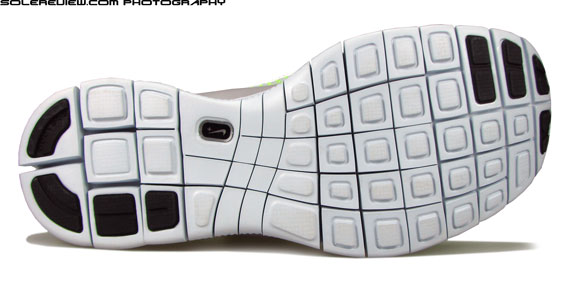
This is how the earlier version of the Free 5.0 outsole used to look like. Notice the huge inter-lug spacing under the heel.
And yet the design wasn’t perfect. The wide and deep channels running sideways and length-wise had a tendency to create gaps, which wasn’t so great for transition. By which we mean that more often than not, one could feel some of the individual square lugs and the gaps between them as you went heel to toe or the other way around.
By virtue of their geometry, square lugs have angular edges, and some of it could be felt on weight loading. Like in some places under the heel and forefoot, based on how your gait went about loading pressure. So when the 2014 Nike Free 5.0 switched its legacy midsole design with a hexagonal one, a lot of what we just mentioned became a thing of the past.
The refined layout introduced multi-directional movement of the midsole, and eliminated the sharp edge corners and transition gaps. The boundaries of the midsole got more rounded, took off the pressure points and smoothened landings for heel strikers.
Even a brand new release needs improvement, and the upper which accompanied the outsole design felt like bit of a work in progress. Despite being visually striking, there were design areas lacking in functional refinement. Like too much material in the place where the shoe flexes, causing the layers to press in on the skin.
Or a tongue design which looked very fancy with its split flap , but let the lacing pressure through and slid to one side during runs. The medial Flywire cords – particularly the first row – had a backwards slant, and applied pressure on the foot in a way which could be categorized as intrusive.
So yes, while it was redesign with intentions in the right place, the upper needed some tuning-up of its own. Sometimes, the difference between good and great is a solid upper design, and the improved 2015 Nike Free 5.0 attempts to bridge that chasm.
2015 seems to be the year of progressive and meaningful upper upgrades, based on the few Nike models we’ve tested. The Flyknit Lunar 3 corrects some of its previous shortcomings; both the Nike 3.0 and 4.0 Flyknits now come with improved upper fit, and the refreshed Nike 5.0 smoothens out the past problem areas. And when we say smoothen, it means literally so, for the insides are really gentler on the skin than how the 2014 version felt.
If you need to distill the extent of upper updates into four areas, then it would be the forefoot, tongue, Flywire placement and the heel design. We have some comments on the insole and midsole too, but let’s leave it for our talk about the lower section, ok? For the present, we’ll apply a zen-like focus to the going-ons in the new upper.
Maybe not fast. We need to clear up one area before we proceed, and this refers to something which Nike has underscored on their Free 5.0 product page.
In the ‘benefits’ section, people from Swoosh’s marketing team claim that the shoe has a ‘full bootie construction for seamless comfort’. This, we feel, is misleading because most of us equate a bootie design with one which has the tongue attached to the upper. For examples, like how the 2013 Nike Free rocked it.
The updated Free 5.0 does not feature a gusset, and the tongue is free to go where it pleases, within the confines of a lacing loop. Leaving aside a few functional advantages over last year (we’ll cover that, as usual), it is constructed traditionally.
Meaning it is joined in the front like all shoes, and that’s all there is to it. That said, we know the reason why Nike has said that (the bootie thing), and during the course of this breakout we’ll devote a paragraph explaining that in semantic and pictorial detail.
One of the issues on the 2014 Free reported by us and many others, was how the forefoot overlays felt intrusive, bending inwards when flexed. That could be felt either over the small toe or big (small for us), depending on the person wearing it.
The entire toe bumper had synthetic layering, and the two opposing ends of the first eyelet row was also bridged by a piece of synthetic.
This is one place which sees a lot of cleaning up on the new Free 5.0. The mesh on the forefoot continues though the lacing without any overlay (there is a seam, though) all the way over the tongue.
The application of fused synthetic has been greatly reduced this time around – it is now only a strip which starts at the base of the medial forefoot, and arcs over the toe-box and meets the first lacing row.
There’s a new construction trend in some of the Nike models, which happens to be this combination of an open net-mesh glued on to a foam base. We saw this in our teardown of last year’s Nike Lunarglide 6, and the Free 5.0 uses something similar. Most of its upper is built using this composite, a design which delivers flexibility, ventilation and weight reduction in a single swoop.
Now that we mention weight, special callout for the 2015 5.0’s substantial weight decrease – much in thanks to the material swap(s). For the same size, the shoe is 20 grams or 0.7 Oz lighter than the 2014 Free 5.0.
When you’re talking about a shoe which weighs in the vicinity of 250 grams, a straight decrease of nearly an ounce is the equivalent of a 10 minute improvement over your 2.40 marathon PR.
The lower base of the forefoot – including the toe bumper’s – is made of the above mentioned material, doing away with the requirement for a synthetic overlay. The fused synthetic is only used over the toe bumper, and alongside the eyelets for reinforcement. Yes, and the lace-loop and Flywire cord guides too. Add to that more open mesh area on the medial forefoot compared to its 2014 counterpart.
Last year’s Free 5.0 mesh seemed to take design inspiration from Flyknit, and featured a fabric which had a coarse texture. We must also point out that the forefoot mesh came with no lining – a second layer of fabric underneath – so the visual coarseness also translated into a rough feel inside. The 2015 Free rectifies that completely, and behind this change lies the reason why Nike chose to call out the ‘bootie construction’.
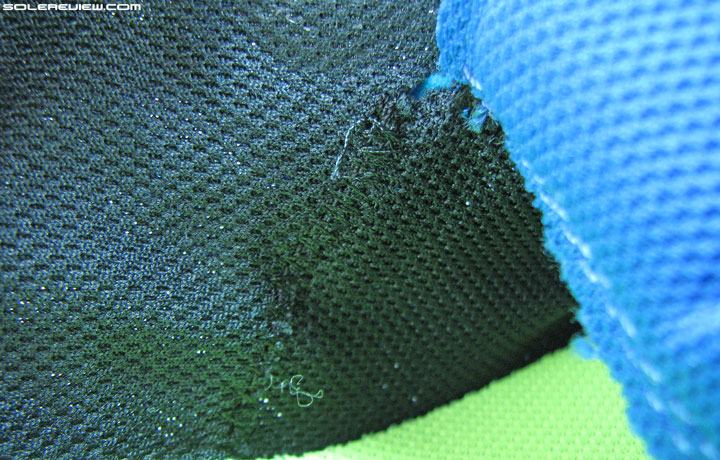
See that lining in the front after the seam? That is new for this year. The 2014 Free had lining only till the place where the seam is.
On this Free 5.0 release, a second layer of inner lining insulates the foot from the happenings on top. The difference is that while the 2014 5.0 had its lining only under the Flywire cords, the 2015 edition has a full lining which also covers the entire forefoot. So yes, if you pinch the upper and lower forefoot meshes, you will notice that they are two distinct layers.
We reckon this is what Nike means by a ‘bootie’, but as we remarked, this is misleading terminology. They could have just said, ‘extended forefoot lining for smoother feel’, and that would have been good enough, easily understandable. After all, in footwear parlance the word bootie refers to a kind of silhouette and not the lining or the lack thereof.
Mesh materials are updated; both in areas of external upper and inner lining. The coarse Flyknit mimicking material is replaced by a traditional sandwich mesh, a type which has some padding sandwiched in between. The lining might look similar to 2014 Free 5.0’s, but it is not the same. Do a touch test, and the 2015 lining has a softer hand feel.
A notable structural change can be seen (and felt) in the lacing. In our reviews, we often highlight the gap or distance from the tip of the shoe to the lacing origin because it has an impact on fit and feel. Both the 2014 and 2015 Free 5.0 share asymmetrical lacing – a design which has the lacing area skewed to one side (lateral) instead of being right along the center.

1) Change to softer mesh, and toe-box is shallower. 2) No more synthetic ‘bridge’ connecting the first row of eyelets 3) Tongue is more padded.
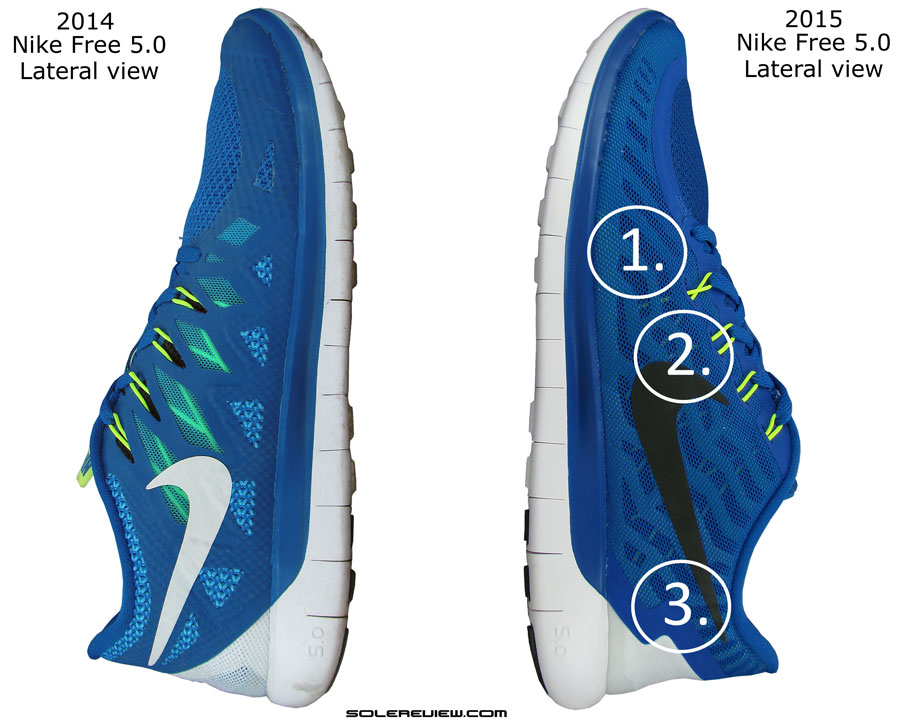
1) Side panels redesigned to be made of a lighter, more vented mesh 2) Flywire cords change their position, and don’t feel as intrusive anymore. 3) Softer collar section.
If you measure the length of the open space between the 2015 Free’s tip and closest end of lateral lacing, it is nearly 10 mm shorter than the 2014 Free 5.0’s dimensions. So the space at the base of the second toe felt a bit baggy on the 2014, slightly puffy. Since the new 5.0 extends lacing over this portion, the forefoot is more fitted and sits flush over the foot.
Because of this design change, we prefer the 5.0’s forefoot fit over the 2014 iteration. The upper sits over the foot contour better, and it does so without any undue pressure or discomfort. This update has an effect on how the Flywire cords feel, for the simple reason that both are interconnected.

We’ve never been of the cord based Flywire, but the 2015 Free doesn’t have the medial cord pressure of the 2014 version.
The medial Flywire strands of the 2014 Nike 5.0 had a tendency to strain themselves against the foot. The position (and angle) of the cords in relation to the foot appeared to be the reason, so when the lacing of the 2015 Free 5.0 moves forward, the Flywire does too.
Hence the pressure which we felt on last year’s shoe is vastly minimized – though not completely eliminated.

No split tongue; conventional construction with more padding and softness. In short, more comfortable.
The tongue uses the same mesh used in the forefoot, and also adds in lining and foam padding for good measure. It’s got a lace-loop on top, but it doesn’t arrest tongue slide completely; some degree of it will happen within manageable limits.
For whatever you think this information is worth, the widest part of the 2015 tongue flap is around 20 mm narrower than the 2014’s split flap.

The heel base has a transparent, filmic overlay. So that the textile does not sag/bunch-up at the bottom.
Like the forefoot, the upper heel replaces much of the synthetic leather layering with mesh. Though the area was collapsible in both the shoes, the 2014 5.0 felt much stiffer and more resistant to bending.
So when you combine all four areas of updates – namely the forefoot, tongue, Flywire and heel – what one gets is a Free 5.0 upper which feels incrementally softer than the 2014 model. The upper feels so soft and pliable, it is like getting into a pair of hotel slippers. It has a great out of the box feel, with no break-in required. This holds true for barefoot use too, where the shoe feels far better inside than what we had the previous year.
Can the upper be called plush? No, rather soft and compliant, and goes about its job of covering the foot discretely. The fit also comes across as snugger, but with a consistent quality. After all, the new Free 5.0 has this additional lining and tongue padding while using the same last (internal shoe dimension). This occupies more internal space than what the materials on the 2014 5.0 did. However, we need to clarify that the upper feels comfortably snug but far from tight, so there’s enough splay room to go around.
In a way, the 2015 Free 5.0’s design ethos is a nod to the days of the earliest Nike Free versions. If you remember, the first few models relied on extensive use of soft synthetic suede on their upper, and they came with a true bootie fit – though a little tight around the instep.

Look closely at the synthetic strip over the toe bumper. Now observe how the forefoot mesh is lower than the one around the tip. This is not a perfect picture.
From a sizing angle, the past and present versions fit the same, which is true to size. That established, the 2015 Free feels shallower right near the tip, over the big toe. This happens due to how the two kinds of mesh are joined together. When the arc shaped synthetic strip goes over the toe bumper and forefoot meshes, both materials don’t sit edge to edge our flush. Instead, the softer forefoot mesh is lower, and hence creates that shallower feel.
In our opinion, this aspect of the upper is the only flaw on an otherwise polished design. The fused synthetic does not causes any issues during running, but when walking the lowered ceiling tends to catch on the big toe. Reminds us of how Ravenna 6 felt; a similarly shaped piece resulted in an identical outcome. Except that the Free 5.0’s problem isn’t as pronounced, but nevertheless a minor annoyance.
Reflectivity? Far greater coverage than the brightness of 2014 vintage. The swoosh logos on the outer and inner upper are much larger, and do a decent, if not great, job of being seen in the dark.
There’s 100% part sharing with the 2014 Free as far as the insole, midsole and outsole bits are concerned, so surely, not much could have changed ride-wise? That is true, not much. But change there is, and what else could it be than adjustment of foam density?
First, the removable insole, sockliner or footbed – synonymous terms which are used interchangeably depending on the time of the day. It is the same Ortholite species alright, but softer.
More squish, easier to squeeze between fingers, that sort of thing. You don’t have to be Sherlock to deduce that the sensation of softness just underfoot takes on an upward graph.
But then, where there’s Yin, can Yang be far behind? The balance between the two complementing layers of foam is restored by a slightly firmer-than-last-year midsole.
Net result, the level of cushioning is essentially the same, except that the delivery method changes. Softer upper layer this time around, and a firmer foundation which the latter rests on.
And yet, we won’t call the shoe cushioning soft, not by any stretch of imagination. At the same time, it is neither hard or overtly firm, so what which category do we slot the Free 5.0 in? Some wordplay can come in handy here, and we can safely describe the ride as ‘padded’. After all, the stack heights appear respectfully adequate, and is founded on a 8 mm heel to toe offset.
Where the ‘minimal’ part of the shoe comes into play is the forefoot, which is extremely flexible. Forefoot transitions are a bit of an effort, with no help from the otherwise available roll-off from a stiffer midsole. For a section of Free runners, this could cause some initial soreness, a temporary condition more likely to occur when making the transition from a more built-up shoe.
Despite the apparent lack of support features, the midsole is in fact quite stable. In the heel and midfoot, the sidewalls raise higher than the insole line, creating a cupped base for the foot to plant on.
In simpler words, the foot rests lower in relation to the external midsole edges.
Hence at no point of time do you feel a nervous lean or bias, and the behavior is as neutral as they come. The 2015 Free also carries forward one of our favorite midsole design aspects – a prominent flare swooping under the arch. So though the actual midsole has a narrow girth or waist, there’s no edge pressure, just gradual wrapping by the foam layer underneath.
The flexible midsole doesn’t hinder transition quality; rather the less compressive nature of the foam and flexibility plays to their advantage. There’s a better sense of connection with the ground, and the touch and go feel of the forefoot feels efficient. A slightly firm base keeps foot sink at bay, and weight loading over the shoe comes across as progressive and economical. It’s also not hard to build cadence on the Free; the shoe is definitely no slouch.
Can you go long distance in the Free 5.0? We definitely think so, but it solely depends on user tolerance. If one is accustomed to racing flats, the padded insulation will feel like luxury. On the other hand, if one is stepping down from a full fat version of a running shoe, there might be a telling of a completely different story.
Ride is also made smoother by the constant splaying and adjustment of hexagonal pods, as they work independently from the overall mass of the midsole. The rounded (but not rockered) heel is also a transition aid, helping in gradual landings without the jarring edge strikes. It is also very, very silent in case the sound of outsole scraping is something which bothers you in other shoes.
The only drawback of the Free outsole is that it attracts a lot of debris; and this is seen more under the heel and midfoot than in the forefoot. The front might temporarily trap small pebbles, but that area is also constantly ejecting them because of the splaying/splitting action during flexing. That doesn’t happen so often in the heel, and hence the small objects tend to stay put. Wonder if shallower grooving/splicing in the heel would help.
One of the best compliments a running shoe can get is how ‘less of a shoe’ one feels when running in them. In plainspeak, if you can focus on your running without feeling the distractions from the shoe, then you have a winner. The new 2015 Nike Free seems the right shoe to bestow that compliment on, and the basis for that gesture would the shoe’s cohesive nature.
Good footwear design is as much about a comfortable upper as it is about ride dynamics, and the Free 5.0 thrives in that notion of balance. What’s more important, there’s a symbiotic pairing of the upper and the midsole, and that cohesion translates into perhaps the most comfortable Nike Free 5.0 till date.
An unchanged pricing of $100 is an added plus, considering the current landscape where $100 retail is ‘entry level’ for major brands. Even Skechers, the erstwhile king of sub $100 running shoe market, was last seen increasing the size of its price stickers to make room for triple digits.
(Disclaimer: For this review, Solereview bought the shoe at full US retail price.)
Looking to upgrade your older Nike Free 5.0 to the latest version, but not sure how the 2015 model compares? We can help here. The following infographic is a ready-reckoner for what changes you might expect in the new model vs. old. To make this more fun, we’ve put in a system of percentage match, which calculates a weighted average for a set of attributes.
A higher or lower match percentage is neither good or bad. The % number just tells you how similar or distanced the new shoe is from the previous version. Total match % is a result of weighted averages.

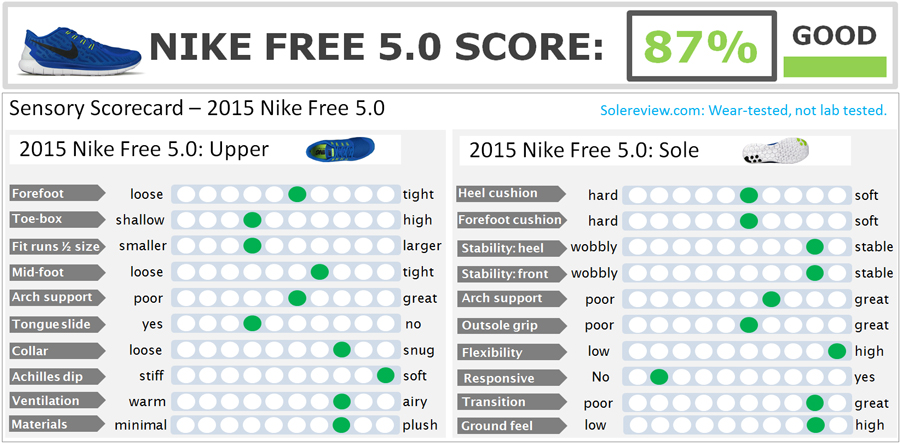



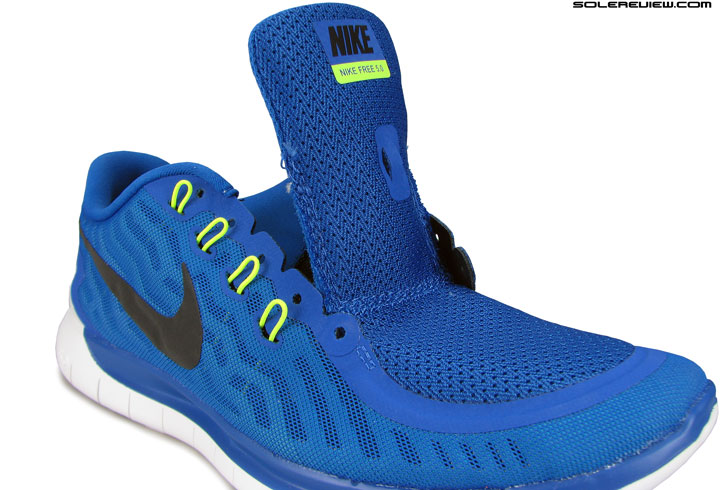

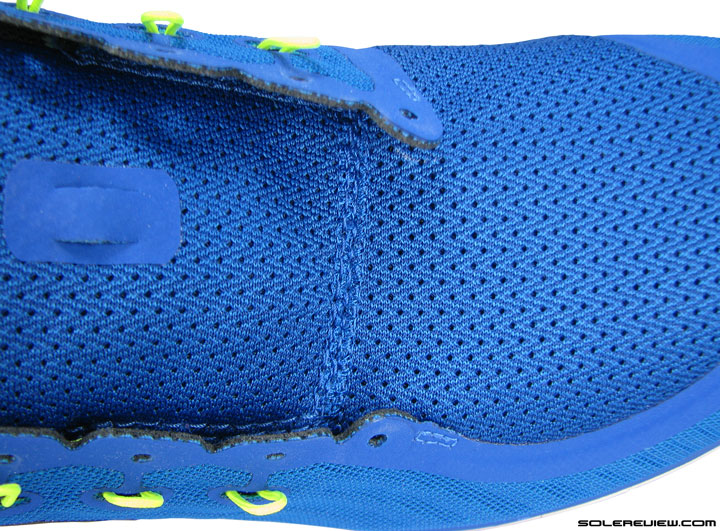
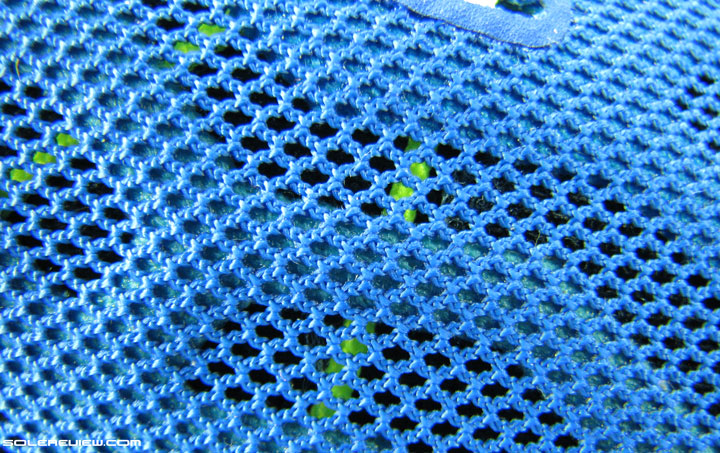
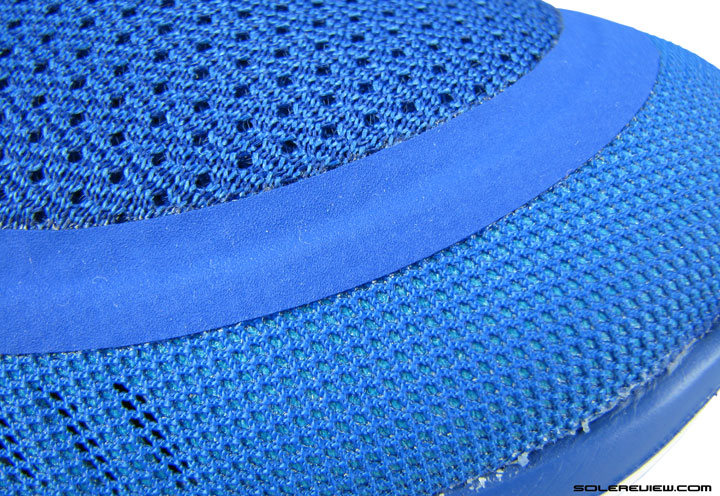

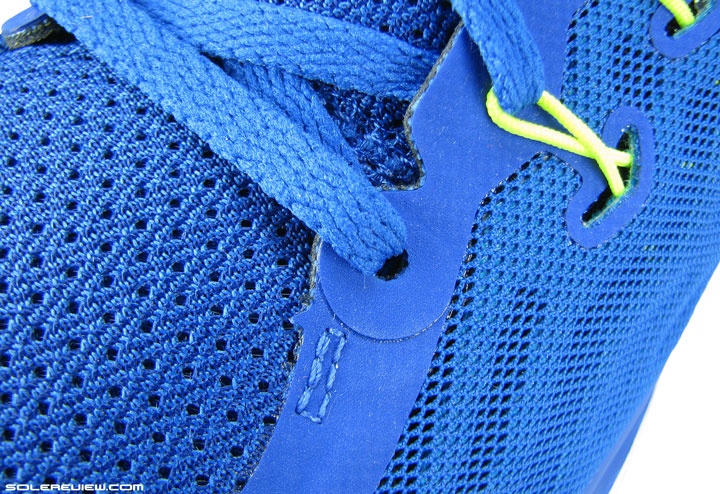


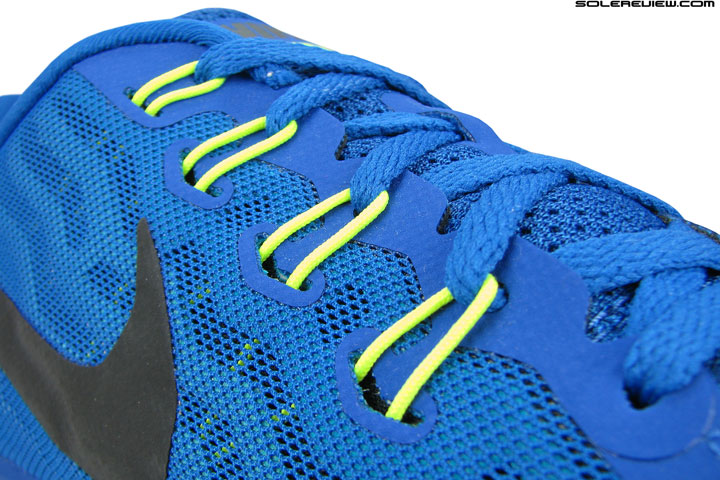
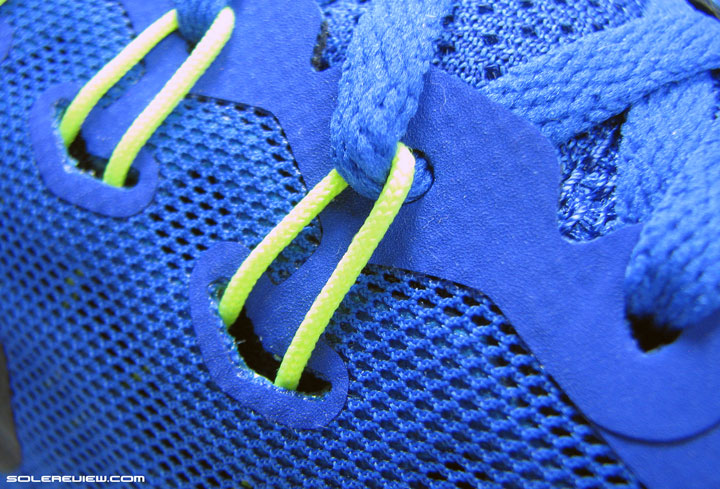

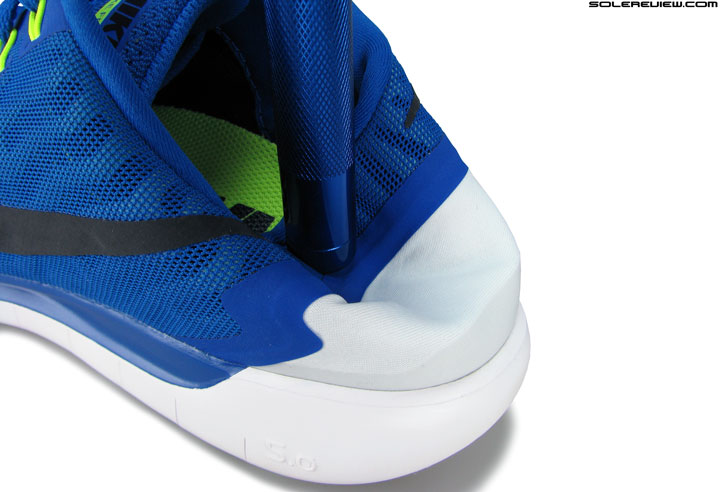

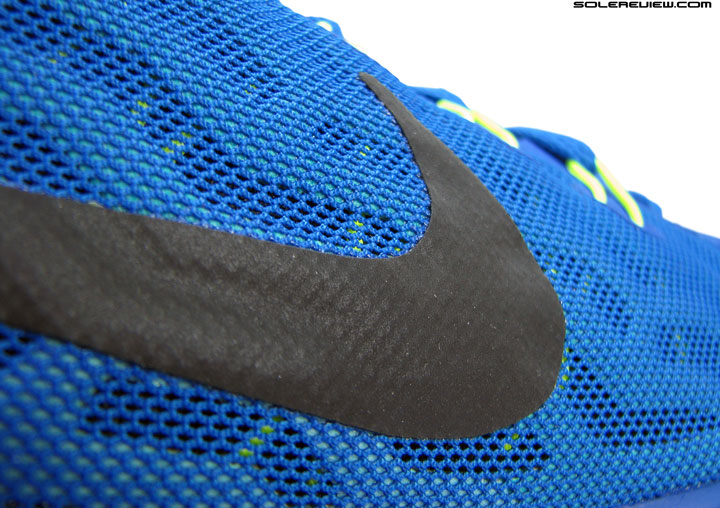

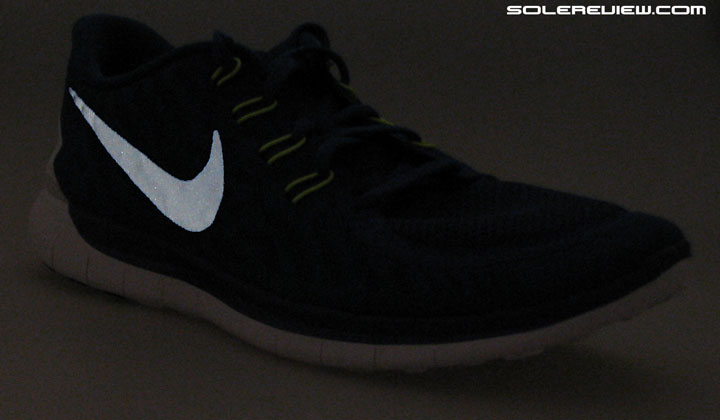
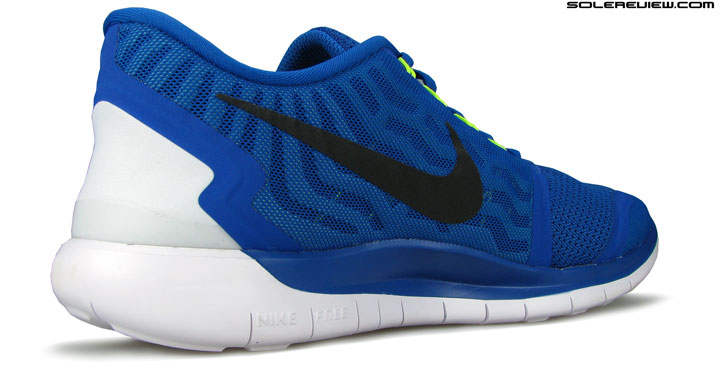

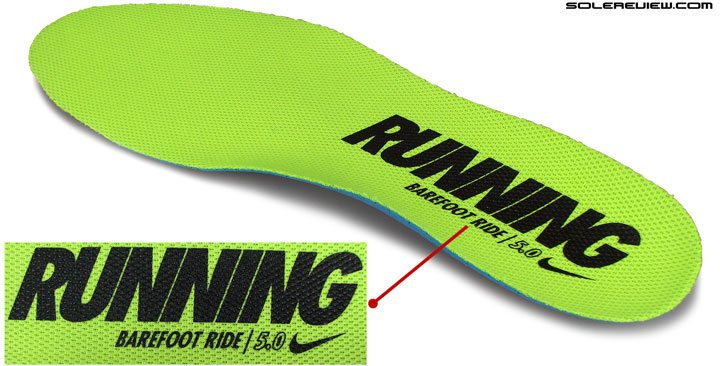
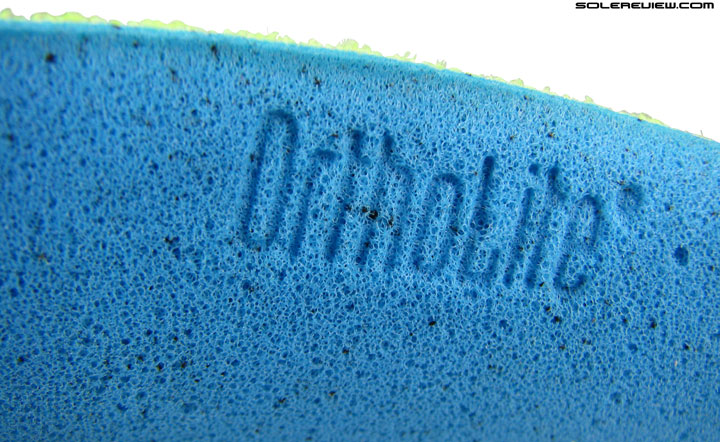


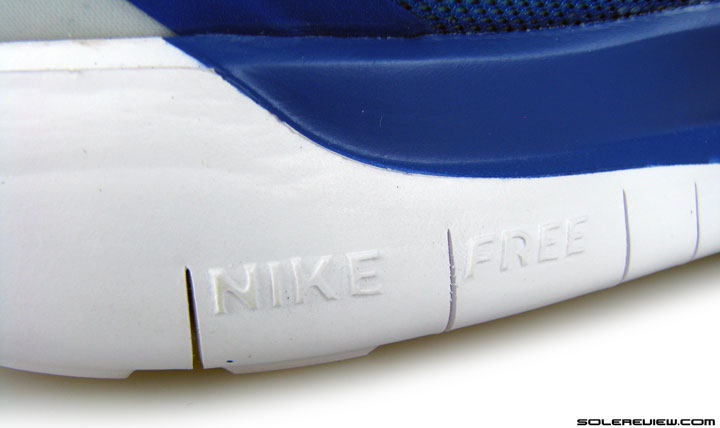

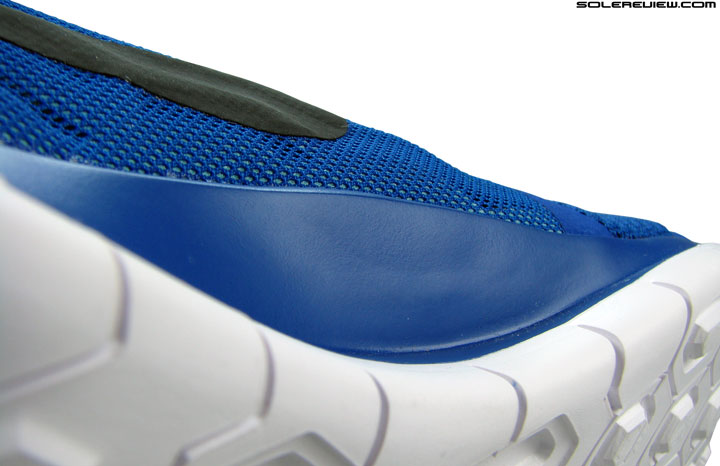


49 comments
awesome review!! I just want to buy this one this week and then read this review. Great!! Really helpful for me, thanks for the review
You’re welcome!
Great review, as always. In fact, I am wearing my 2015 Free 5.0 right now, picked them up yesterday. Primarily I intend to use them as a daily sneaker (work), though your review served to raise some curiosity towards giving them a spin when running. Gotta get rid of the shin splints first, though.
Thank you. The Free 5.0 is a nice shoe to wear casually – the soft insole and lightweight upper makes it comfortable!
Thanks for the review! How do these compare to the NB Zante? I like the Zante but 6mm I’m not quite used to yet and a slightly heavier/ slower runner then they are prob designed for but fit is good, especially toe box. Looking for higher mileage trainer of similar fit. NB 1080 are not it for me so maybe these?
The Zante is softer/responsive than the Free 5.0, and the forefoot is tighter. The NB 1080 on the other hand, is a much more cushioned trainer. Very different from the Free and Zante, the 1080 does well for the heavier runner if we have to generalize.
Any plans to review the Nike Lunar Tempo? Thanks and great review!
Later this month!
Would you reccommend this shoe to a forefoot striker?
Yes.
I am new to the site but loving the in depth reviews.
Which would you go wtih: Free 5.0 or Flyknit Free 4.0?
I loved my Kinvara 3 but they are over-due for replacement. Thanks!
Tough call, but we’d side with the Free 4.0 Flyknit.
Excellent review! Would You recommend it for a marathon?
I’ve been using the 3.0 v5 and 4.0 v3 up to half marathon distance but I’m a bit unsure if they are adequate for this.
I was planning to use the flynit lunar 2 for the longer distances, training and race, but I was very disapointed no how loose the upper is.
If you’ve done half in the 3.0 and 4.0, then yes, a marathon is doable in the Free 5.0. Has a little more cushioning, and fits better than the Flyknit Lunar 2.
being so light would it be recommended for larger runners (245lb 6ft 5in) with knee problems or is there not enough cushioning or stability. just thinking of alternative to the Nike Vomero 10 you recommended to me which i purchased. thank you kindly for that. fit and feel great. need to preserve my knees. just thought the Nike free 5.0 would be lighter to move around from Vomero 10 after being on feet all day.
many thanks guys.
Great to hear that the Vomero’s are working for you. The Nike Free 5.0 is not a problem – it is stable enough because of its lower profile and firmer midsole.
Very comfortable upper too. If you need to take care of your knees, work on building up the muscle/tendon support system around the knees (Quads/Glutes/Hams) – shoes are only a small part of the equation.
just been reading another review saying the Nike free 5.0 is small fitting (photo compare with pegasus 30 which i have) should i go up a size in the free 5.0
The toe box is shallower than the Pegasus 30, but sizing-wise it is the same. No substitute for personally trying on both shoes at the store, regardless of what reviews (including ours) say.
Hello. So do you recommend to buy these in normal shoe size? I read that the toebox is shallower, but is going up a 1/2 size recommended? The
We did not size up, but recommend that you personally try them on first and see how much of an issue (or not) the shallow frontend is for you.
NOOOOOOOOOOOOOOOOOOOOOOOOOOOOOOOO
HOW DID I FORGET THIS REVIEW!???
just seen pictures of Nike free 5.0 V6.(white)…anyone got them yet ? review ? comments
I had them. I have been ordering from Nike.com and testing shoes. I send back before 30 days which is their return policy. It’s great to get to wear a shoe outside and be able to return. They aren’t as flexible in the sole as the 3.0s though. (The 3.0s for training by the way, not running category if there is such a 3.0.) They are definitely a shoe to give a try. The flywire secures your foot rather well. The toebox has plenty of room if you have narrow feet. The tongue isn’t padded. It is the same or simikar to the 2014 version of the Free 5.0 which is shown in this article.(Flat) The sole isn’t cushioned like the new Free 5.0 2015 like in this article. Their sole is rather hard. Let me know if you have any specific questions. Remember that the 5.0 V6 is a training shoe and not necessarily meant for lots of running. Same goes with the 3.0 V4. The Free 5.0 2015 is a running shoe however.
After running a 100 miles in them I think I am having a problem of Plantar Fasciitis does it tend to happen in them
Can’t generalize, sorry. There are many factors which might cause PF to flare up.
really need Nike LunarGlide 7 review and a comparison with LunarGlide 6~thx
You’ll have to wait; the review is at least a month away.
Would you recommend the Free 5.0, Free 4.0 Flyknit, or the LunarTempo if purely worn for speed workouts? I am a forefoot/midfoot striker.
Do you think these can be used to run a half-marathon?
Depends on what you’re used to. For some, the Free 5.0 can prove to be more flexible than the foot is used to, causing some soreness.
I’m looking for a running shoe that I can also wear casually. Given the choice between the Free 5.0 and the Pegasus 31, which would you prefer? I require a wide in Nikes, so I’d have to order via NikeID. Luckily, the 31 Flash still seem to be available!
question: would you rather get these or the flyknit 4.0s just for daily walking around?
These (5.0) are more comfortable for walking around.
morning guys, i’m a sucker for a running shoe, having Nike Vomero 10,Lunarglide 6 and Adidas SGB7,of which the latter seems to make me run faster. These Nike Free 5.0 look super comfy, i know there seems to be less cushion and less of a shoes and flexible, but how do they go up against SGB7,that bit faster pace i like, but still use the others on tired days due to work.
p.s silly question, but how often should we rotate shoes.
many thanks guys enjoy your day.
The SGB7 feels faster than the Free 5.0, just because the midsole is more responsive and stiffer in the forefoot. With the Free you need to work through quite a bit because of its flexible front-end.
i absolutely love this shoe… and your review is spot on.. THANK U.. odd question.. i can’t figure out what works better for me, 11.5 or 12.. while 11.5 is snug and it feels like a glove.. the 12 allows my toes to wiggle around and sometimes almost feels too loose upfront.. i wonder if the snugness would make my legs or feet sore after a 20 mile run.. (did that last week, felt great , but just a bit sore.) then again a 20 mile run at 8:00clip would make most normal people a pit sore.. … any thoughts?
The general rule is that there should be a thumb width of space between your longest toe and the tip of the shoe. This allows enough margin for the foot to expand during longer rules.
And yes, soreness after a 20 miler is pretty normal :)
Hi. I’m thinking of buying a pair (Nike free 5.0 2015 womens) but I have wide feet. Is it good if you have wide feet?
Hi. I’m thinking of buying a pair (Nike free 5.0 2015 womens) but I have wide feet. Is it good if you have wide feet?’
Not quite sure, depends on your foot shape. Best way to find out is try them on yourselves and see what fits best.
Ok thanks! Unfortunately couldnt find my size in my home country!…Tried looking in HK but it’s sold out!!
Hi. Great review as usual, you really set the standard very high. Maybe you can help me here:
My weight is 187lb and I’m 46. I run on high cushioned shoes like Glycerins and now Vomero 10. But as I travel often and have space issues in my luggage, I thought that these F5.0 might work on my luggage better than the other ones. My fear is that this reduced cushioning might be too much. The normal distance i would run with them would be 10km.
Thanks a lot and best regards!
You should try the Nike LunarTempo instead. The upper is semi-collapsible, which makes it easier to store than the Glycerin/Vomero, and the there’s more cushioning and lower weight than the Free 5.0.
I have an older pair of Frees that I like to occasionallly rotate with the Vomero. The newer Free (based on a store try-on/jog) is too narrow and does not seem as flexible compared to the older Frees. The toe box seems somewhat restrictive for the upper part of my foot.
I realize many were critics of the older model Free’s loose fit, but I am the opposite as an underpronator searching for extreme flexibility and natural motion. Any suggestions for another comparable, light shoe or a possible modification of the Free (lacing/flywire adjustment) ?
Thanks !
Should add that I am referring the the Free 5.0.
Gotcha!
Try re-lacing the shoe by skipping the first row altogether, and start lacing the second row, but without the Flywire. That will affect the toe-box height, but should open up some forefoot room.
Do you know which year is your older Free from? Do you have a picture to share? Nike tends to release the older Free’s as a lifestyle sneaker. Those are basically the same shoe, but with updated colors and materials.
Appreciate the detailed reply.
My Frees are from the first or second edition. Based on your info, I did find a similar shoe at the Nike Lifestyle Sneaker site, but pricey in my opinion ($90) for a shoe that I really do not wear that often.
May try the lacing technique in-store.
Thanks, again !
Comments/Q&A will be closed till January 17, 2016. Any inconvenience is regretted. Premium access members can continue to use their dedicated comment thread, which will be open.
Comments are closed.